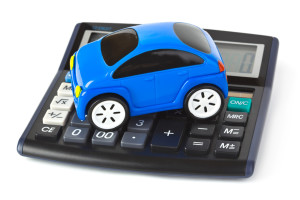November 13, 2015
 Overview
Overview
Mutual funds are one of the best ways for people to enjoy a high rate of return over the long term. A mutual fund is generally a collection of stocks that are chosen by the fund manager. There are some fees associated with investing in a mutual fund, but generally the rate of return that is offered will offset the higher fees. One of the most important things for any investors to do is to reevaluate the mutual funds that are owned every year. Over the long term, this can be a great way to take a look at the overall strategy that is in place with your investments. Here are several reasons why this is so important.
Diversification
Having a diversified portfolio is one of the most important aspects of earning a solid return over time. There are many people who have too much of their portfolio invested in one type of mutual fund. Spreading out the capital that is invested in various mutual funds is a great way to diversify the funds that a person owns. Over the long term, a diversified portfolio generally has lower rates of risk than portfolios that are not diversified.
Better Selection
Over time, an investor can have a better selection of funds by looking at them every year. Although the past is the best way to gauge the future, there are some funds that have performed well in the past that are not performing well now. This would only be noticed by taking a hard look at the funds that are owned by a person. By taking an unbiased look, an investor can decide to reallocate his or her funds into different sectors of the market. This can make a huge difference over time in the rate of return that is offered by the investments.
Rate of Return
The rate of return that an investor earns on his or her portfolio is one of the most important metrics to follow. There are many different ways in which the rate of return can be increased. Always make sure that a portfolio is diversified over the long term. In addition, there is a correlation between risk and return. Younger investors can afford to take on a higher level of risk because they have more time to recover from the risk. This is important to keep in mind for those who are just starting out investing. By looking at all of your funds every year, this is a great opportunity to invest in those funds that will go up more in the future. Over the long term, this will help to boost the rate of return that is earned.
Final Thoughts
Mutual funds are a great way to have a diversified portfolio that has a proven track record of success. However, it is important to choose the correct mutual funds to invest in. There are many different sectors and funds for investors to choose from. One of the best ways to keep a portfolio working over time is to constantly reevaluate the investments that are made. This is one of the best things that any investor can do in order to have a high rate of return over the long term.
Jessica Kane is a professional blogger who focuses on personal finance and other money matters. She currently writes for Checkworks.com, a leading supplier of personal and business checks.
Tags:
Cash Flow,
economy,
Interest Rates,
investments,
money,
Mutual Funds,
Returns
November 12, 2015
 Buying a car is not a simple decision to make and you have probably spent quite a bit of time thinking about it. From choosing the type of car you want to thinking about how to finance it, you need to put a lot of serious thought into the decision you are making. Once you have settled on make of vehicle that you want, it is time to start thinking about how to pay for it. So which is the best financing option for you?
Buying a car is not a simple decision to make and you have probably spent quite a bit of time thinking about it. From choosing the type of car you want to thinking about how to finance it, you need to put a lot of serious thought into the decision you are making. Once you have settled on make of vehicle that you want, it is time to start thinking about how to pay for it. So which is the best financing option for you?
Buy in cash or savings?
Buying your car on your savings is the best option when interest rates are low on your savings account yet you have enough savings. It is much better than keeping the savings with a low interest rate and borrowing a personal loan at a higher interest rate to buy the car. You can also combine your savings with a personal loan that covers a partial cost of the vehicle.
It is advisable to only use your savings when you have enough to leave some for emergency costs after paying for the car. If you do not have enough savings to pay for the entire price, you can use it to give the biggest deposit possible and reduce the car loan repayment amount.
Personal Loans
Personal loans are the cheapest way to finance a vehicle if you have a great credit score. Personal loans are available from banks, building societies and other finance providers. Avoid securing personal loans against your home as you will be at risk of losing it if you do not make your payments on time. You can shop around for personal loans from the different institutions available. The only challenge with taking out personal loans is that it may take some time to receive the funds and it will affect your other borrowing options.
Hire purchase
This is a way of buying certified pre-owned cars through paying in installments. You need to put down a deposit and make the rest of the payments for the vehicle between 12-60 months. Hire purchase programs are arranged by the vehicle dealers and can be very competitive for brand new cars. You do not own the vehicle until you make your last payment.
Hire purchase is a great option for you if you are in a rush to purchase your vehicle and cannot wait for finance provider protocols. The deposit can be as low as 10% with flexible repayment terms and competitive interest rates. The only challenge with hire purchase is that it may turn out be more expensive for short-term agreements.
Personal contract plan
A personal contract plan is a special car financing option that is a variation of the hire purchase option but with lower monthly payments. This personal contract plan is where you agree to pay the difference between its sale price and price for resale back to the dealer based on a forecast of annual mileage. It is a short term plan usually with a maximum of 36 six months after which you can give back the vehicle to the dealer at no extra cost, trade in the vehicle for another one or pay the resale cost of the vehicle and keep it. This payment plan is great if you do not want to settle on one type of vehicle, it is also much cheaper with a choice of what to do at the end of the payment period.
Grace Malloy is a loan officer with a lending firm. You can read more about your car financing options at Ideal Auto USA.
Tags:
Auto Renting,
budgeting,
Car,
Car Finance,
investments,
loans,
savings
October 26, 2015
 If you’ve decided to make contract-for-difference trading your investment strategy of choice, picking out a good trading platform can be tricky. You need to make a well-rounded decision that accounts for more factors than just the commission fees imposed by a given broker. Take a look at the advice XFR Financial Limited gives below to educate yourself on what’s available out there in the CFD trading platforms market.
If you’ve decided to make contract-for-difference trading your investment strategy of choice, picking out a good trading platform can be tricky. You need to make a well-rounded decision that accounts for more factors than just the commission fees imposed by a given broker. Take a look at the advice XFR Financial Limited gives below to educate yourself on what’s available out there in the CFD trading platforms market.
Regulatory Necessities
Before you pick out a trading platform, it’s important that you make sure you’re not engaging in trading behaviour that will have adverse legal consequences. Difference trading is not legal in all countries, and it’s regulated differently in the ones where it is allowed.(CFD trading is particularly heavily-regulated in the United States.) Do a little research to confirm that the CFD platform you’re looking at is fully compliant with the laws of your home country.
CFD Trading Platforms Required Features
As with a lot of products aimed at the small-scale “retail” investor, CFD trading platforms have exploded in popularity in recent years. This has led to a burgeoning market that presents you with a lot of different options. Before you commit to using a particular platform, make sure it offers you the bare necessities you need to make effective trades.
Stability and reliability — in terms of both hardware and software — are extremely important. This will be relatively difficult to judge based on a platform operator’s claims; obviously all of the brokerages offering CFD platforms want to emphasize the reliability of their products. Reading reviews from other traders will give you a better idea of how reliable a platform XFR Financial Limited has actuallyis.
Good platforms need to give you excellent execution control, especially if you plan to concentrate on short-term trading. Look for CFD platforms that feature automated execution, which allows you to complete orders even when trade volume is very high. You’ll also need a full suite of execution features (e.g. boundary setting) to ensure that you retain full control of your trading activity.
Attractive Bonuses At XFR Financial Limited
Even after narrowing your search down to regulatory-compliant brokerages which offer platforms with a decent set of basic features, you’ll still probably have a wide field to choose from. This is when you should look more closely at the extra functions included in various platforms.
Most platforms come with built-in analytic tools like automated charting, risk management functions, and predictive tools. Once again, the actual operators of a platform will tend to state the value of these extras as positively as they can. Look to reviews from past users to get a more realistic sense of how helpful these features can be.
It can take some time to properly evaluate the features of CFD trading platforms and decide whether or not it will make a good fit with your trading strategy. Don’t rush this decision! It can have a profound impact on your overall effectiveness in the difference-trading market. Demo account at XFR Financial Limited will give you a decent feel for how a single trading platform performs, but you need to shop around and consider multiple options before you commit to one and entrust it with your live trades.
Tags:
Business,
Capital,
Currency,
economy,
investments,
money,
stock,
Trading
October 21, 2015
 Proper business analysis is definitely required in order to increase the overall performance of the business. Just because you have a small scale business doesn’t mean that you do not need to pay attention to identifying the specific metrics which need to be adjusted. After all, business analysis is crucial for improving the overall performance of a business, be it a small scale one or a large scale corporation. All businesses face issues on a regular basis; what you need to do is to assess these issues and arrive at a useful analysis so that you can plan for your business accordingly. This article would teach you how to analyze your small business like a pro.
Proper business analysis is definitely required in order to increase the overall performance of the business. Just because you have a small scale business doesn’t mean that you do not need to pay attention to identifying the specific metrics which need to be adjusted. After all, business analysis is crucial for improving the overall performance of a business, be it a small scale one or a large scale corporation. All businesses face issues on a regular basis; what you need to do is to assess these issues and arrive at a useful analysis so that you can plan for your business accordingly. This article would teach you how to analyze your small business like a pro.
Business cannot function without its life blood, i.e. money and money comes from the customers, therefore the very first thing that you should tackle when it comes to analyzing your small business is customer results. Basically you need to conduct an operational analysis with a focus on customer satisfaction. You should aim at providing all your customers with equal treatment, irrespective of the cost of the product or service. By analyzing the investment results and maintaining customer satisfaction you will be able to boost the profit growth of your business.
Sure, a small scale business generally requires minimum investment but sometimes it is necessary to pay attention to the strategic and business results of your company brought about by the investment you make. You need to ask yourself whether you are investing as much money as your competitors or not. Now it is not necessary to use up a huge chunk of money for this process because you can always try to increase the strategic efforts of your small scale business through cost effective solutions.
When you’re analyzing your small scale business, you need to pay attention to the financial performance as well. In other words, you need to review the rationality and cost efficiency of the steps your business is taking. You need to find out whether the amount of performance that you’re getting out of the cost is worthwhile or not. In this analysis, you need to tackle all pressing questions that are financial nature. The rule of thumb here is to strive to improve the performance while incurring a lower cost with specific limits in place.
Business analysis is not just about analyzing problems and issues, it is also about coming up with solutions for them. Thus, if you want to analyze your small scale business like a pro then you will need to innovate. The innovation area of business analysis is highly important as it provides qualitative results. A multi-functional solution is always preferable here as these help in resolving several issues at once.
Not taking care of your company data when making analysis is extremely detrimental to the end results. Therefore, to be a pro business analyzer you need to recognize the value of the company data first and then commit to a basic data strategy so that you can hatch a plan that engages outside assistance and develops internal resources in an optimum manner.
Tags:
Analysis,
Business,
Capital,
Employment,
Experiments,
Ideas,
income,
investments,
money,
Returns
October 20, 2015
 Sugar is not a grain, or a meat commodity – it is regarded as a soft commodity in much the same way as lumber, cocoa, coffee, orange juice and cotton are. Sugar is primarily traded on the ICE exchange (Intercontinental Exchange) and it has the following ticker symbol: SB. However, sugar is also traded on other exchanges around the world, including the Zhengzou Commodity Exchange (CZCE), the National Commodity Exchange Limited (NCEL), the Brazilian Mercantile and Futures Exchange (BF&M), the National Commodities and Derivatives Exchange (NCDEX), and the Kansai Commodities Exchange (KEX).
Sugar is not a grain, or a meat commodity – it is regarded as a soft commodity in much the same way as lumber, cocoa, coffee, orange juice and cotton are. Sugar is primarily traded on the ICE exchange (Intercontinental Exchange) and it has the following ticker symbol: SB. However, sugar is also traded on other exchanges around the world, including the Zhengzou Commodity Exchange (CZCE), the National Commodity Exchange Limited (NCEL), the Brazilian Mercantile and Futures Exchange (BF&M), the National Commodities and Derivatives Exchange (NCDEX), and the Kansai Commodities Exchange (KEX).
Each contract size for sugar is 50 long tonnes or 112,000 pounds. Sugar is delivered in raw sugar cane with 96° of polarization. Sugar contracts are traded in the following months: January, March, May, July and October from Monday through Friday 2:30 am through 3:15 pm Eastern Standard Time. The price of sugar is quoted at $0.0001 cents per pound, and the tick size is 0.01. Traders must meet specific margin requirements to trade sugar as this determines how much outlay is needed for each contract size.
For example a hypothetical sugar futures contract could take the following format: SB15F@13.12 means that the Sugar Contract for 2015 January is trading at $0.1312 per pound. This is precisely the type of format that a sugar trader would purchase a contract. When you are ready to trade sugar contracts on the ICE, the margin requirement is 12%. In the preceding example, the contract size of 112,000 pounds of sugar would cost a trader $14,672. With a 12% margin upfront, the amount needed to make the trade is $1,760.64.
Understanding How Profits are generated with Sugar
For every $0.0001 move in the price of sugar, the total price move for the contract is $11.20. Profits in sugar contracts are easily determined by the difference between the exit price and the contract price. The result is then simply multiplied by $11.20. Presently, the price of sugar is $11.57. The price of sugar is near its 5 year low figure, since it was trading close to $35 in 2011. The price of sugar has consistently declined over the past five years. Prior to the 2011 sugar price surge, trading sugar was well beneath $30, and in fact between late 2006 and 2008 was hovering around the $10 range.
Sugar is primarily available in the form of honey, Maple syrup, sugar beet and sugar cane. Its distinctive characteristic is that it is sweet and this carbohydrate is an instant pick me up by being able to generate rapid energy for the user. The refined form of sugar is white sugar and it comes from sugar beets and sugar cane. Some 78% of global production in sugar comes from sugar cane. This is why it is imperative to follow news updates regarding weather phenomena that impact upon sugarcane production. Shortages of sugar cane lead to price rises in sugar, depending of course on demand and sugar inventories.
The world’s major producers of sugar include Brazil and India, followed by the European Union. What is particularly interesting about this particular commodity is that the majority of sugar is consumed in the country of its production. This is in stark contrast to many other agricultural commodities such as wheat, corn, soy beans, red meat etc. Many countries export the vast majority of their agricultural produce and soft commodities.
Determinants of the Sugar Price
Depending on which country or region we were talking about, demand for sugar will vary considerably. Western societies are moving away from sugar-saturated diets, in favour of sugar substituted diets. This trend is likely to continue as concerns grow about the impact of consuming too much sugar on the general health and well-being of society.
Sugar substitutes are now widely used across the US and Canada, with Europe close in tow. Some of the most pressing concerns with regards to sugar consumption are obesity, diabetes, tooth decay and the like. Even with declining preferences for sugar, the US remains a major consumer of world sugar.
The price of sugar is not free of market manipulation. In the US and many other countries, there are measures in place to protect producers by maintaining artificially high prices. This has the effect of causing consumers to look at alternatives. For example, many food companies are now turning to corn syrup as a substitute sugar. There are growing calls from sugar beet producers and sugar cane producers for a free-market system vis-a-vis sugar prices.
Of course an important determinant of the price of sugar is the quantity of sugar beets and sugar cane. As mentioned, the more abundant these commodities are, the lower the sugar price will be, all things being equal. Adverse weather has a detrimental effect on the production of these crops. Things like frost damage, excessive rains and flooding, droughts and other negative weather phenomena reduce the crop supply and raise the price of sugar on the markets.
It is clear that tariffs and subsidies are widely used to prop up the sugar markets around the world. Nobody knows quite what the real price of sugar should be, since there is so much artificial maintenance of market prices. In truth, the price of sugar may well be substantially less than what it presently is, but the clearest indicators yet of the price of sugar are likely found in things like export numbers, domestic consumption and society’s changing attitudes towards processed sugar.
Tags:
Business,
Capital,
Commodities,
investments,
money,
stock,
Sugar,
Trading






Recent Comments